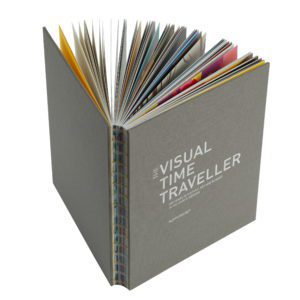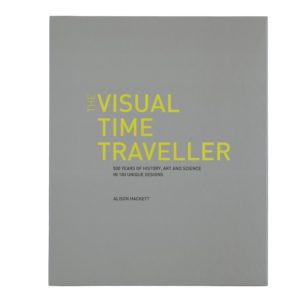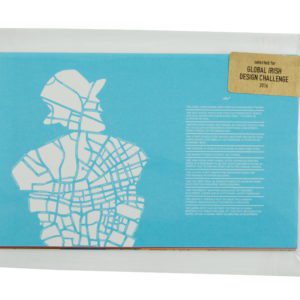“Frogs levitate in a strong enough magnetic field.” This fact was illustrated on a large advert and displayed on various bus shelters in Manchester and Liverpool in 2009. It was the result of a clever idea dreamt up by the outreach department of the Institute of Physics: develop eye-catching designs with physics content and advertise them on bus shelters to draw the unsuspecting layperson into the world of physics. Usually this space is reserved for commercial advertising for products and services such as mobile phones or insurance – hence the ‘surprise’ tactic. See http://www.physics.org/facts/ for the other facts advertised (plus explanations).
As Institute of Physics representative in Ireland I had gone over to Manchester for a meeting about outreach with the side benefit of seeing these adverts for physics in situ. I am a sucker for anything so innovative and striking with education as its by-product, so, the following year a budget was found from within IOP Ireland and we turned these physics facts into multi-choice physics questions placing them as adverts on the DART and buses around Ireland. A text messaging service was included for interested commuters to try their luck with sending in their answers by phone. Despite encouragement I steadfastly refused to have any prizes involved as the motivation was to be the intrinsic joy of engaging your brain rather than offering a reward of monetary value. With a prize involved we wouldn’t have known why someone had texted in an answer.
In 2011, the third and final year of my involvement with this DART campaign, one of the questions caused a big headache. The question was based on a previously produced IOP poster displaying a list of interesting physics facts, including, “A clock on the equator runs slow compared with one on the pole”. This was turned into a multi-choice question as follows: Would a clock on the equator run slower, faster or identical to one on the North Pole? Designs come back (v nice), advertising space is booked (v expensive) and we’re getting ready to launch the campaign (v hard work). The job of preparing the physics solutions to these questions – to be put online when the project launches – falls to my colleague Sheila, a physicist. A day or two later she calls me.
“Alison, the answer is ‘identical’ for the clock question. The answer ‘slower’ only works for a pendulum clock in that question.”
“What? WHAT?! The IOP can’t have been wrong on the poster.”
“They were. I’m certain. It is only true for a pendulum clock.”
“But we can’t change the question to only pendulum clocks. That would be ridiculous. What’s the problem with a regular clock?”
“It’s complicated. Both general relativity and special relativity come in to it. Each are having a miniscule effect in opposite directions and the effects are cancelled out in a regular clock.”
“They can’t EXACTLY cancel each other out in a regular clock.” My maths brain doesn’t like this at all. It doesn’t seem possible that the two tiny numbers would always be equal. But I’m more panicked by the fact that the questions are already printed and we can’t change them now. Who, in the 21st century would think by ‘a clock’ we meant a pendulum clock? No one. I try once more.
“Are you sure Sheila? It just doesn’t seem right.”
“Sorry Alison. But this is the correct answer. I’ve an academic paper here published in 2005, Einstein Year, explaining these effects. The IOP must have made the poster in the nineties, before this research was done.”
I’m clutching at straws now. “What about an atomic clock?”
“Yes, even in an atomic clock. It’s to do with special relativity and general relativity – each having an opposite effect.
“And they EXACTLY cancel each other out?” I won’t let it go.
“Yes. I have the paper downloaded. I’ll send it to you.”
Oh dear. I bring the question down to the coffee room in the physics department in UCD to test it on the experts.
“Pfah!”
“No!”
“They can’t be exactly the same!”
Almost fisticuffs. In the School of Physics! Everyone is talking at once. Arguing in the language of physics. I’m lost. The debate moves to the atomic level, how atoms vibrate in atomic clocks and electronic transitions. And I realise that the question is indeed subtle – a bridge between the experimental (a clock measuring time passing) and the theoretical (Einstein’s theories of relativity). Measurement (experimental physics) is limited, imperfect, part of the real world of engineering whereas theory is unbounded by anything other than the underpinning mathematics with its coherent structure and definitions. The interdependency between the two is the driver for the advancement of science in the last half a millennium. For example, when Eddington observed (or measured) gravity bending starlight during a solar eclipse in 1919 it was seen as the first experimental confirmation of Einstein’s theory of relativity.
Two of the experts, Emma and Dominic, come up to my office to check this out. The paper is produced. I don’t understand much but their discussion culminates in a number. “Less than ten to the minus thirteen.” Dominic says with confidence. Emma concurs. “Yes, Sheila’s right.” And they reassure me that for the purposes of a clock measuring time the two effects would in fact cancel each other out.
Phew! We only have to change the answer to keep on the right side of the physics. The campaign goes ahead, although I’m still in the dark as to what exactly the ten to the minus thirteen means. (Help from wiki while writing this: one of the two factors in the accuracy of an atomic clock is the frequency and intrinsic width of the electronic transition.)
To most people though the question must have seemed daft. If asked whether a clock on the pole and at the equator would run at the same time they would probably say yes (and they’d be right) and they would wonder why we were asking such a simple question. However several eminent physicists, when I posed this question to them, got it wrong; and I boldly took pleasure in explaining that both special and general relativity had an effect; finishing with a nonchalant throwaway (that would definitely have suffered from any further probing) “it’s something to do with ten to the minus thirteen”.
AH 24 June 14
Dart campaign see http://www.iopireland.org/education/resources/qc/page_49943.html
“A Small Puzzle from 1905” by Alex Harvey and Engelbert Schucking, PHYSICS TODAY, March 2005, [27] page 34. Publication of the American Institute of Physics.





